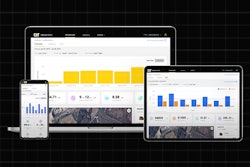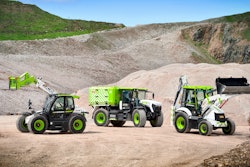
The hunt for solutions to decarbonize construction fleets is on and mobile fueling is taking hold as a go-to solution can help with sustainability plans as well as save on costs.
The pressure on businesses to embrace sustainability practices is rising across North America, including in construction fleets. Staffing shortages, increased costs and a competitive market are some of the concerns for managers of all size of fleets, with sustainability gradually finding itself closer to the top of that list in recent years.
Across the country, fleets are launching initiatives to target decreased emissions, focusing on minimizing miles traveled, increasing fuel efficiency, right-sizing fleets and using alternative fuels. Governments at the local, state and federal levels are implementing policies to reduce emissions and work with fleets that embrace environmental, social and governance (ESG) programs.
While Europe is generally considered as leading the sustainability movement, the U.S. movement is well under way. The Biden administration recently announced via executive order that light-duty vehicles acquired by the government will be emission-free by 2027. Additionally, U.S. Office of Energy Efficiency and Renewable Energy points to the best practices for sustainable fleet core principles on its website as a path forward for fleets.
Sensing the sea change, fleet owners and operators are starting to make or consider changes to their day-to-day operations. One such change is to incorporate on-site mobile fueling into fleet management. On-site mobile fueling is a convenient way to fill construction vehicles during downtime to maximize productivity. The mobile service provider comes to where fleets are, either offering to directly fill vehicles or to fill existing on-site tanks used to service vehicles.
According to GeoTab, on-site mobile fueling not only helps fleets become more efficient, but it also helps fleet managers reduce their fleet’s carbon footprint. Based on the current economic climate, it can also be seen as a smart investment to bring in new business opportunities as companies shift to lower-carbon targets.
Case in point: a recent study conducted by Forbes found in a survey of 1,000 C-Suite and VP-level business leaders that sustainability is linked to better business. A majority of those surveyed expected that investing in sustainability initiatives would help to increase sales and improve brand reputation.
While the immediate benefits to those using mobile fueling are viewed as making fleets more efficient and cost-effective, the inherent sustainability value built into mobile fueling makes it an important consideration for a fleet manager’s business strategy. Information released by GeoTab suggests mobile fueling services are helpful in reducing emissions by offering access to alternative fuels and reducing off-route fill-ups.
For example, mobile fueling provider Shell TapUp offers access to a variety of fuel products such as Shell Regular Unleaded Gasoline and diesel. Other fuels offered by the service include R99, B20, and Shell V-Power NITRO+ Premium Gasoline. Additionally, when fleets retain a mobile fueling service, drivers no longer need to fill their own vehicles or on-site tanks, saving time, money, miles driven and emissions.
A recent study by GeoTab shows that each off route refueling trip added an average of 3.45 pounds of carbon dioxide released per vehicle, per month. Those emissions are saved by switching over to mobile fueling, avoiding off-route trips to the gas station. In addition to saving 3,080 hours a year in productivity, large fleets also reportedly avoided 23,000 miles a year on off-route gas station fill-up visits with the switch.
Breaking it down, fleet drivers divert an average of 2.2 miles out of the way to get gas – wasting an estimated 20 minutes per visit to a station for fuel. The average fuel visits per month is 7.7 times, meaning the time drivers spend filling up significantly decreases productivity while also releasing extra emissions.
In addition to promoting sustainability, mobile fueling can help streamline operations. Using traditional on-site fuel tanks often creates challenges to construction site productivity, presenting additional work to refuel equipment. Increased equipment downtime, coupled with the inability to track consumption effectively, makes it difficult to budget and forecast fuel needs.
These services can help implement on-site fueling tanks in a safe location so equipment and vehicles can be filled at the fleet’s convenience. In addition, many services provide digital fueling data per construction site and machines, reports and invoices are generated by fleet managers in an easy-to-read format. Perhaps most importantly, fleet managers can track fuel usage and costs in real-time.
On-site mobile fueling also works for fleets under pressure to decrease their footprint but are not quite ready to transition to electric vehicles (EVs). Mobile fueling can be paired with a transition to EVs, providing fuel options for the portion of the fleet that cannot be electrified yet.
As the calls to move toward greater environmental sustainability grow across the fleet industry, now is the perfect time for construction fleet operators to consider taking the step toward implementing mobile fueling across fleets.



















